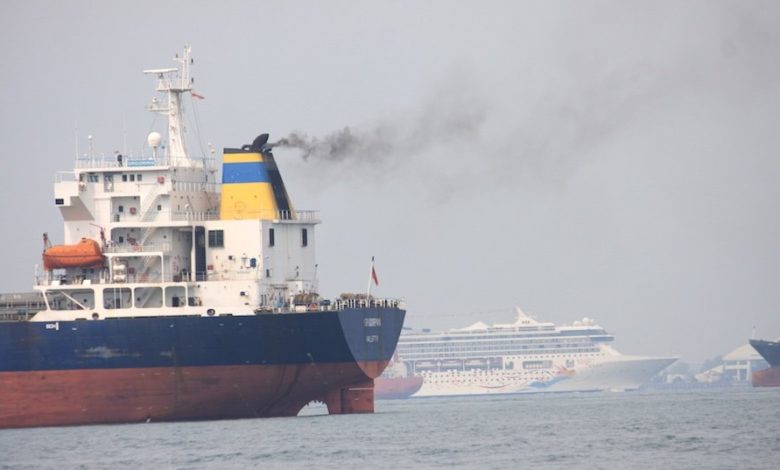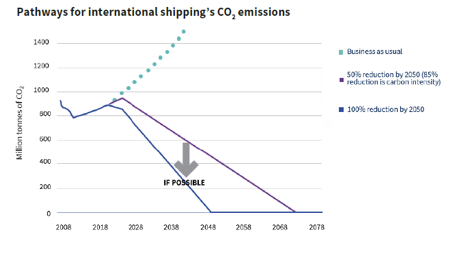No time to lose

Katharine Palmer has a strong message for the world’s shipping industry. LR’s global sustainability manager insists that zero-emission vessels (ZEVs) need to be delivered into shipping’s markets by 2030 at the latest, if there is any chance of achieving the IMO’s 2050 greenhouse gas reduction ambition.
In April last year, the IMO agreed that global shipping will at least halve its greenhouse gas emissions by the middle of the century, even more if possible, compared with 2008 levels. The reduction is required if the industry is to be in line with Paris Agreement decarbonisation targets. LR estimates that this 50% cut in absolute emissions is equivalent to a reduction of about 85% in operational CO2 intensity (grams of CO2 per tonne nautical mile) after taking into account seaborne trade expansion and world fleet growth over the next three decades. A daunting challenge!
A buy-in from shipping’s main players is essential, Maersk’s December announcement that it has adopted a plan to achieve carbon neutrality itself by 2050 is a welcome development.
Strategies for decarbonisation
Together with colleagues and experts at the UK’s University Maritime Advisory Services (UMAS), we’ve been working on a series of studies, with the latest on low carbon transition pathways, launched at the end of January this year. The study assesses ways in which shipping can address the challenges of energy development and vessel design and operational implications relating to the IMO’s ambition.
It stresses the shortage of time and identifies the 2020s as a key decade for piloting and prototyping new fuels and hybrid propulsion arrangements. If these proceed at a fair pace, it is possible that LR’s vision for zero-emission ships being on the water by 2030, now with industry and government support, could be achieved.
The latest study – Zero-Emission Vessels: Transition Pathways – establishes three possible pathways relating to future fuel developments in shipping. The study’s authors stress, however, that these pathways are based on today’s fuel technologies and could change significantly as low or net zero-carbon fuels evolve over the next three decades. Following release of the study, LR and its partners organised a webinar at which the complex studies and methodologies behind the study’s conclusions were explained to participants.
The webinar, hosted by Silje Bareksten, head of sustainability and technology at Nor-Shipping, generated a number of pertinent questions and demonstrated the concern evident across a traditionally conservative industry that faces at least three decades of major fuel disruption. Looking beyond ‘clean’ hydrocarbons as things stand today, however, the study is clear. There is absolutely no time to lose in examining the options and embracing fuel change. Whilst ‘clean’ hydrocarbons – liquefied natural gas (LNG) and methanol produced from fossil fuels, for example – provide significant air quality benefits and gains in energy efficiency, they will not make the IMO’s 2050 ambition possible.
The study’s authors note that until now, global shipping has pursued its own independent fuel strategy, as one of the only major users of high sulphur heavy fuel oil. But the IMO’s decarbonisation ambition means that this must change. Marine fuels of the future will be developed alongside broader decarbonisation initiatives across all energy-consuming sectors. A portfolio of new fuels is likely and will require a ‘holistic’ approach – one to which shipping is perhaps not traditionally accustomed.


The study identifies three possible pathways to meet the IMO’s 2050 ambition. The first is based on one in which renewables dominate the supply of marine fuel. Hydrogen and ammonia produced from renewable electricity, used possibly in fuel cells or combustion engines respectively, could well form a basis for new research and development.
A second approach is based on the development of biofuels. The challenge here, as the study points out, is that the price and viability of biofuels will be driven by the availability of worldwide bio-energy capacity. This, in turn, will require a fundamental change in huge areas of land, which comes with its own challenges. A third pathway sets out an ‘equal mix pathway’ made up of fuels produced from renewable electricity, including hydrogen, ammonia, methanol and batteries; fuels produced from bio-energy such as gas oil, methanol and LNG; and fuels produced from natural gas with Carbon Capture and Storage (CCS). However, the report warns that hydrogen and ammonia produced in this way depends both on a supply of competitively priced natural gas alongside the development of affordable carbon capture and storage technology. Fossil fuels would have to provide a small percentage of the outstanding requirement in this pathway.
